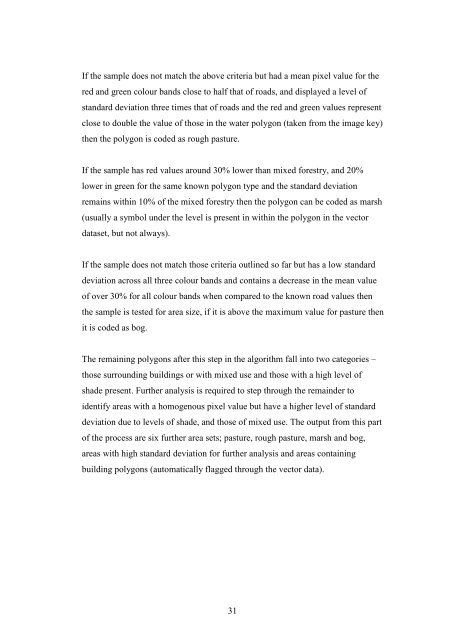Create successful ePaper yourself
Turn your PDF publications into a flip-book with our unique Google optimized e-Paper software.
If the sample does not match the above criteria but had a mean pixel value for the<br />
red and green colour bands close to half that of roads, and displayed a level of<br />
standard deviation three times that of roads and the red and green values represent<br />
close to double the value of those in the water polygon (taken from the image key)<br />
then the polygon is coded as rough pasture.<br />
If the sample has red values around 30% lower than mixed forestry, and 20%<br />
lower in green for the same known polygon type and the standard deviation<br />
remains within 10% of the mixed forestry then the polygon can be coded as marsh<br />
(usually a symbol under the level is present in within the polygon in the vector<br />
dataset, but not always).<br />
If the sample does not match those criteria outlined so far but has a low standard<br />
deviation across all three colour bands and contains a decrease in the mean value<br />
of over 30% for all colour bands when compared to the known road values then<br />
the sample is tested for area size, if it is above the maximum value for pasture then<br />
it is coded as bog.<br />
The remaining polygons after this step in the algorithm fall into two categories –<br />
those surrounding buildings or with mixed use and those with a high level of<br />
shade present. Further analysis is required to step through the remainder to<br />
identify areas with a homogenous pixel value but have a higher level of standard<br />
deviation due to levels of shade, and those of mixed use. The output from this part<br />
of the process are six further area sets; pasture, rough pasture, marsh and bog,<br />
areas with high standard deviation for further analysis and areas containing<br />
building polygons (automatically flagged through the vector data).<br />
31
















